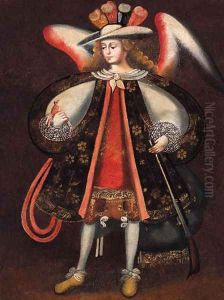Cuzco School Paintings
The Cuzco School is not an individual artist, but rather a colonial art movement that emerged in Cuzco, Peru, in the 16th century. This school of painting is known for its distinctive amalgamation of indigenous and European artistic traditions. The Cuzco School became one of the most important and prolific artistic traditions in the Americas during the colonial period and played a significant role in the cultural exchange between the Spanish colonizers and the native population.
The Cuzco School of painting began after the 1534 Spanish conquest of the Inca Empire. The Spanish imposed their culture and religion on the indigenous population, and art became an essential tool for religious conversion. Spanish friars and missionaries introduced European artistic techniques and iconography to the indigenous people, who adapted them to create a unique visual language that reflected their own culture and heritage.
Artists of the Cuzco School are often anonymous, as their works were usually created in workshops led by a master painter. These workshops produced religious paintings, which were used to decorate churches and convents in the region. Their works are characterized by their use of bright colors, gold leaf, and the incorporation of Andean elements. Figures in the paintings often have an elongated appearance, with indigenous features and local flora and fauna included within traditional Catholic iconography.
The Cuzco School reached its peak in the 17th and 18th centuries. During this time, the paintings not only served religious purposes but also became popular among the colonial elite and were used to assert social and political status. The school's influence extended beyond Cusco, influencing art in other regions of the Andes and the viceroyalty of Peru.
The decline of the Cuzco School began in the late 18th century, as new European artistic trends arrived in the Americas. Despite this, the Cuzco School is still recognized for its significant contribution to the development of art in Latin America, and its works are considered national treasures in Peru. Today, many of the School's paintings can be found in museums, churches, and private collections around the world, and they continue to be a subject of study for their unique blend of cultures and the insight they provide into colonial Andean society.
